PiterEthnoExp. Part III. The Fate of ShitMapOctober 27 ... November 19, 2013 Let’s take an ordinary toilet. The top consists of a tank with clean water, the same water that comes out of the kitchen faucet. On the bottom is a receptacle for shit. It’s amazing how one half of the city works to fill the tank with clean water, and the other—to clean the water people flush down the toilet. 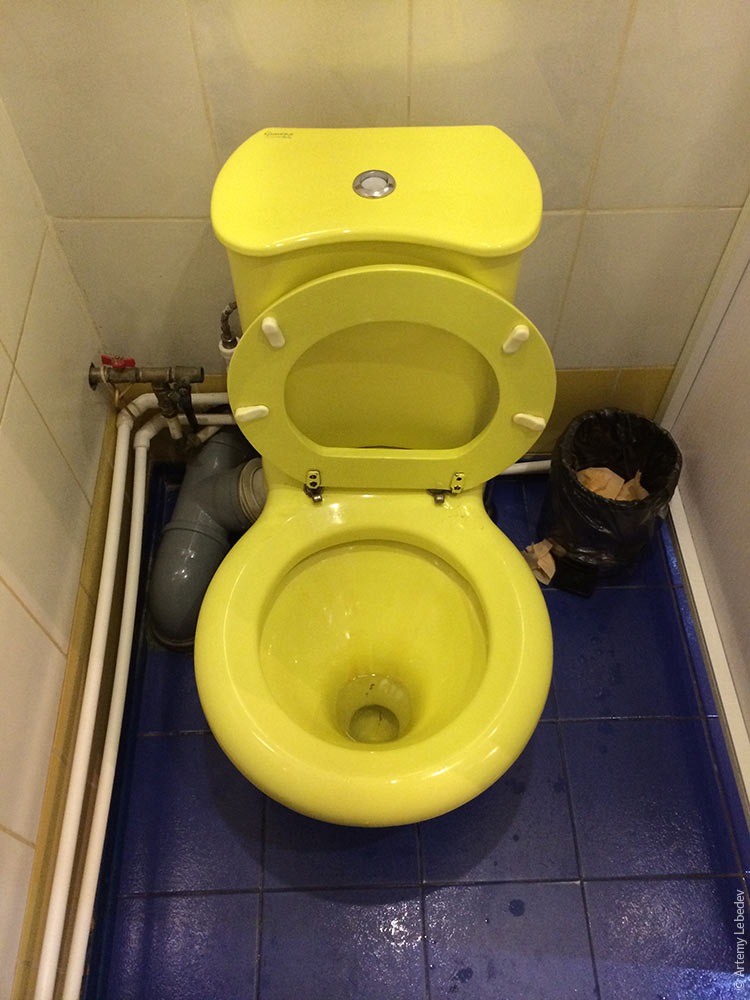 While the clean water part is more or less clear—you pump it from a river, filter it, and use another pump to supply it to homes—the shit part is much murkier. I’ve always desperately wanted to know how such large quantities of shit get processed. And my dream was fulfilled: the Saint Petersburg Vodokanal (Municipal Enterprise for Water Supply and Waste Water Treatment) turned out to be a highly reasonable and progressive organization (unlike the Saint Petersburg Metro) and showed me everything I wanted to see and more. 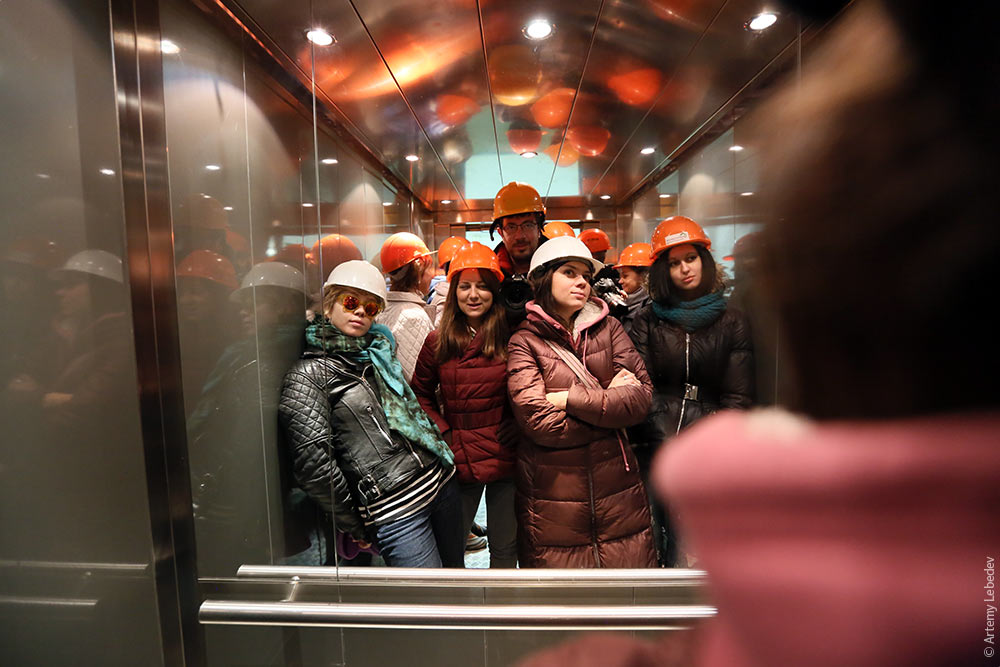 Let’s begin with tap water treatment. The water is taken straight from the Neva River. The Neva’s water is very bad, so it needs to be filtered and purified. 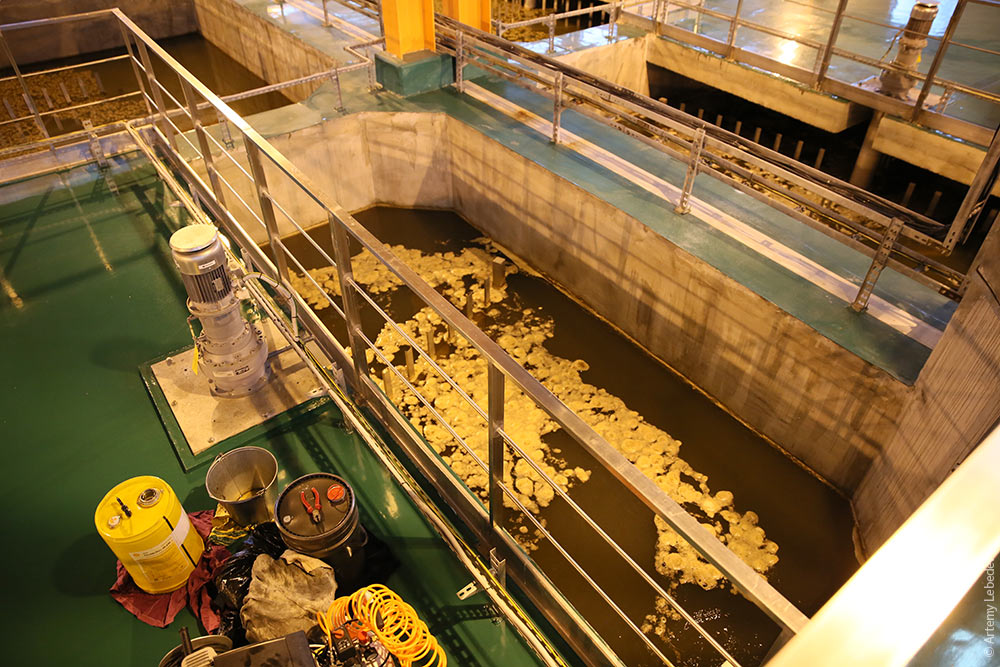 The water treatment plant has very few employees. Everything is automated. (This is the Southern Waterworks.) 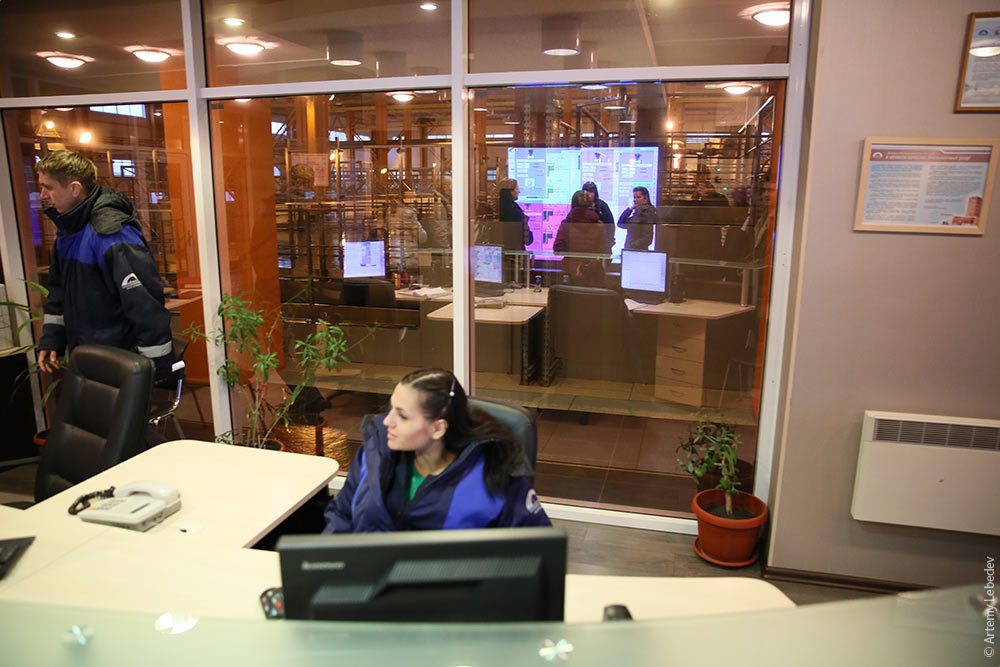 Reminds me of a nuclear power plant (see my story on how a nuclear plant works). 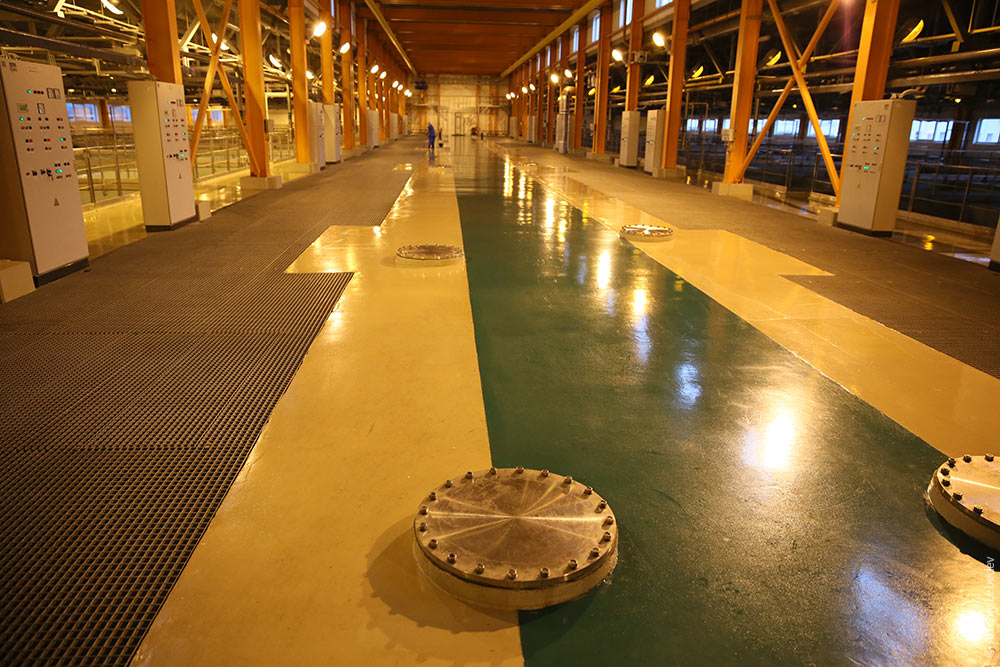 And now let’s visit the most interesting place of all—the South-West Waste Water Treatment Plant. 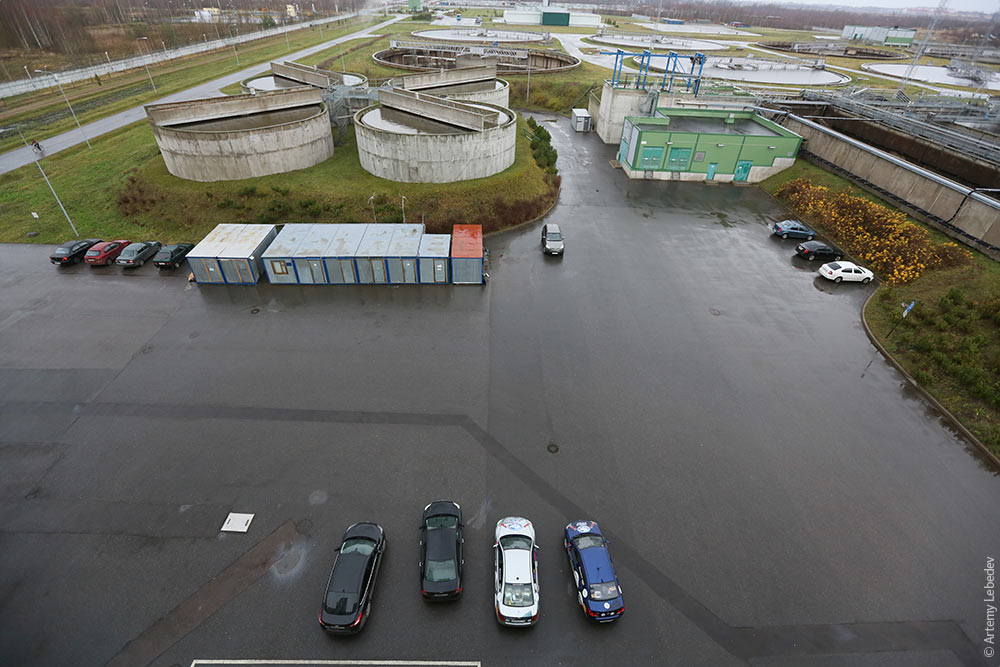 Half the city’s shit ends up here. At first glance, this might look like an air traffic control center. 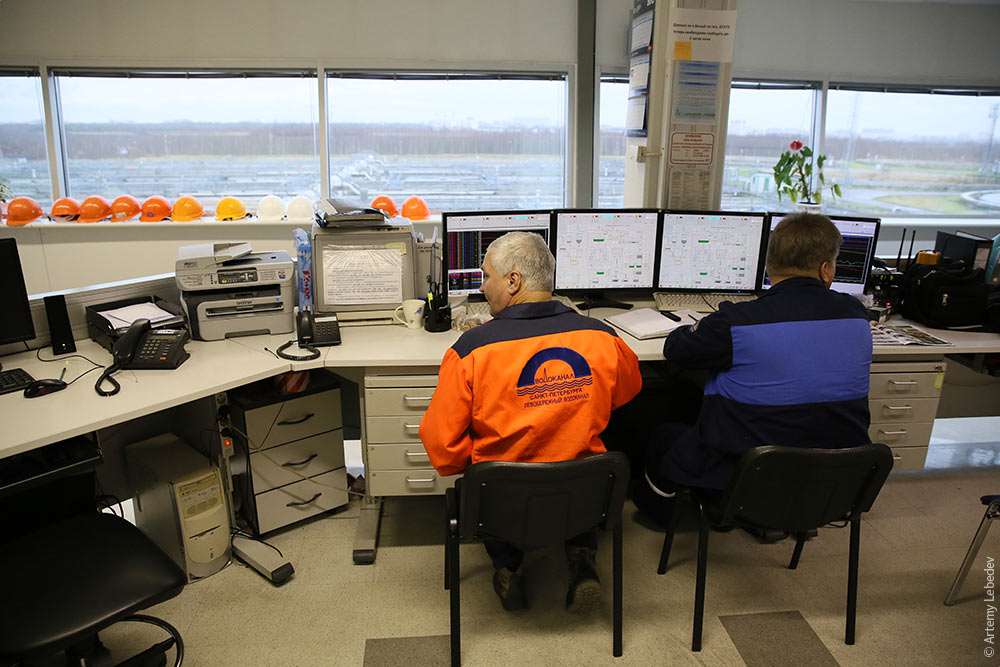 But something much more important is being controlled here: the spirit. 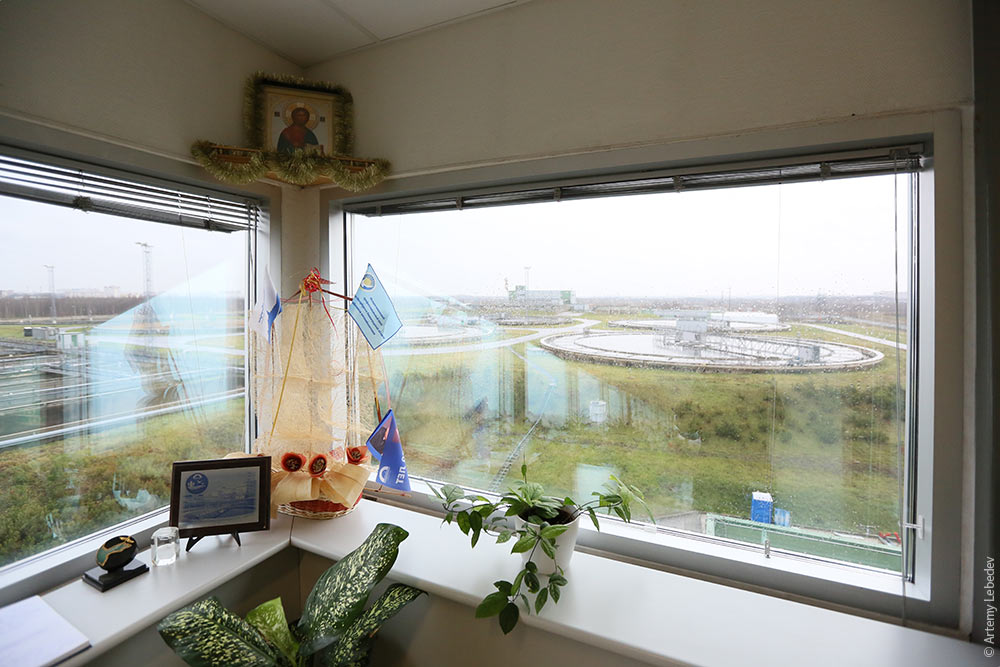 And so, one of life’s biggest mysteries has been solved. Let’s start from the beginning. Shit drops in the toilet. It’s flushed down with 10-15 liters of water. Under the force of gravity, the shit rushes down the pipe to an underground reservoir. From there, it flows through a sewer in the direction of the filtration station. Completely on its own. Along an underground shit river. Then powerful pumps bring the shit up from a depth of 50 meters or so to the primary intake. This is sewage in its pure form (pardon the shitty pun): 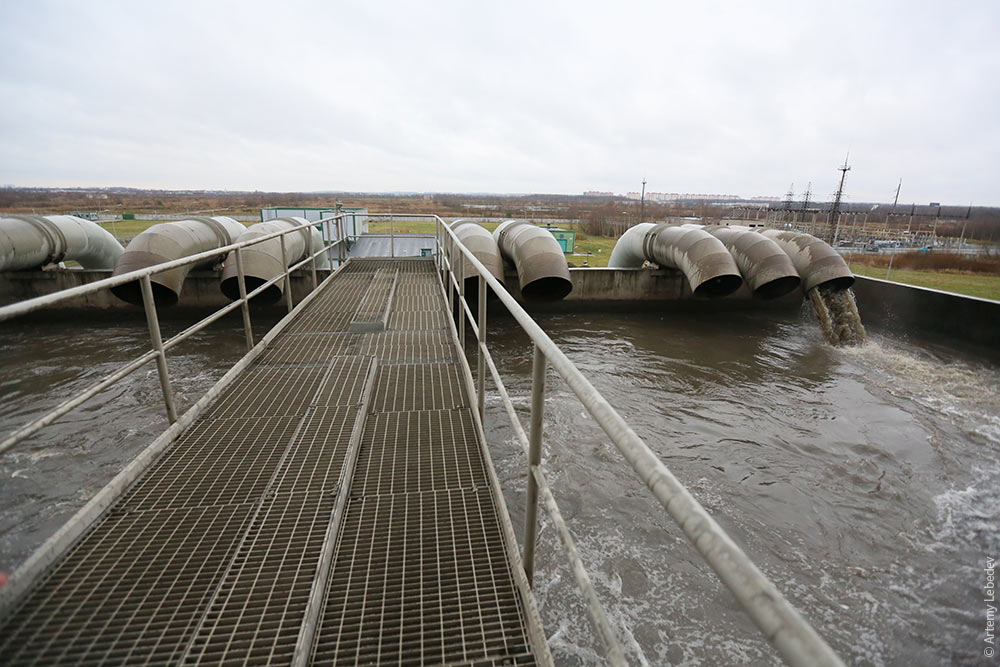 At this stage, various extraneous crap is filtered out from the shit, then pressed into bricks by a machine and burned. 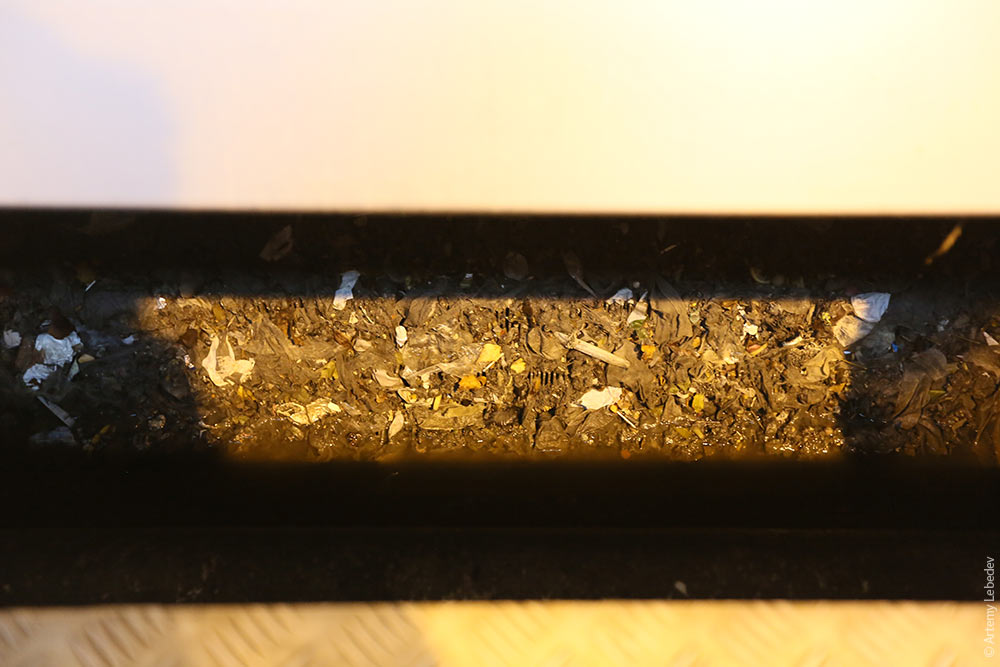 The extraneous crap is called “swimmies” (priplivashi) in professional Russian parlance. The most interesting swimmies are displayed in this museum, whose main motif seems to be narrow bars. (If a dead body or body part turns up, they call the police.) 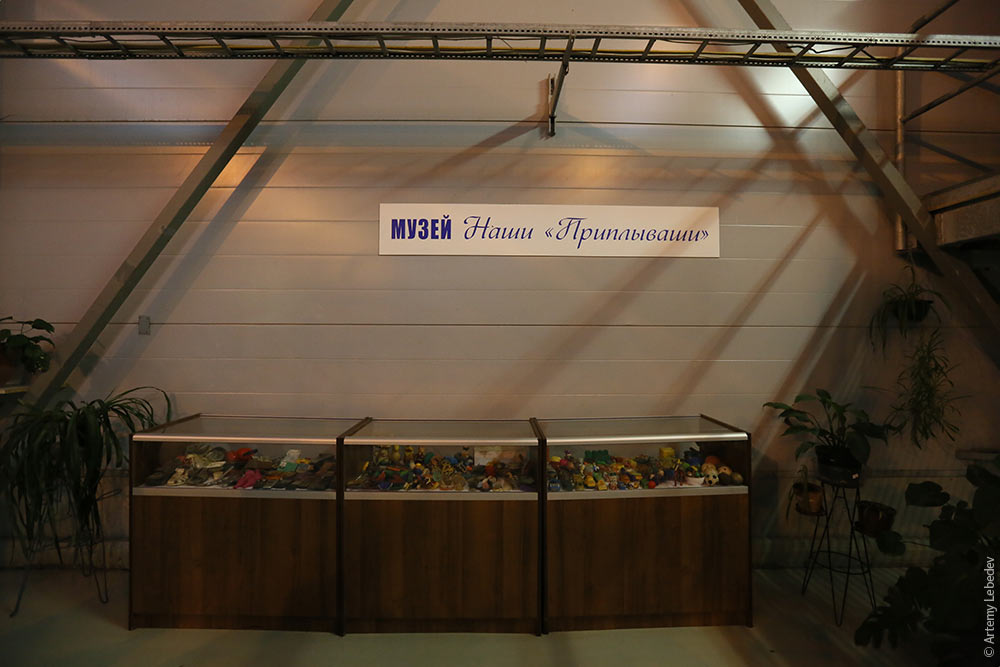 Our “Swimmies” Museum All sorts of things make their way here. The white box in the top right corner contains vibrators. They’re hidden from view so as not to disturb the children who sometimes visit on tours. 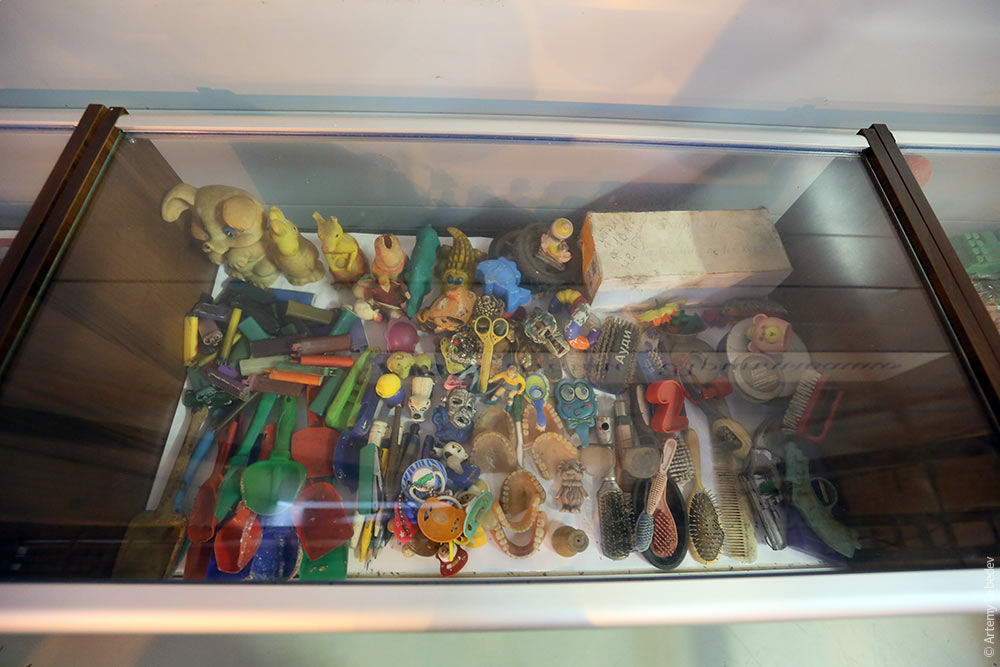 After all the garbage has been filtered out, the shit enters the primary sedimentation tank. The main secret of sewage treatment is that the shit in the water settles to the bottom on its own, where it’s then devoured by microorganisms (sludge). In order for the microorganisms to not only eat well (they eat shit), but also breathe well, they’re supplied with oxygen. This is why treatment tanks are often called aeration basins. The aeration is for the microorganisms which eat the shit. Everything is natural and convenient. 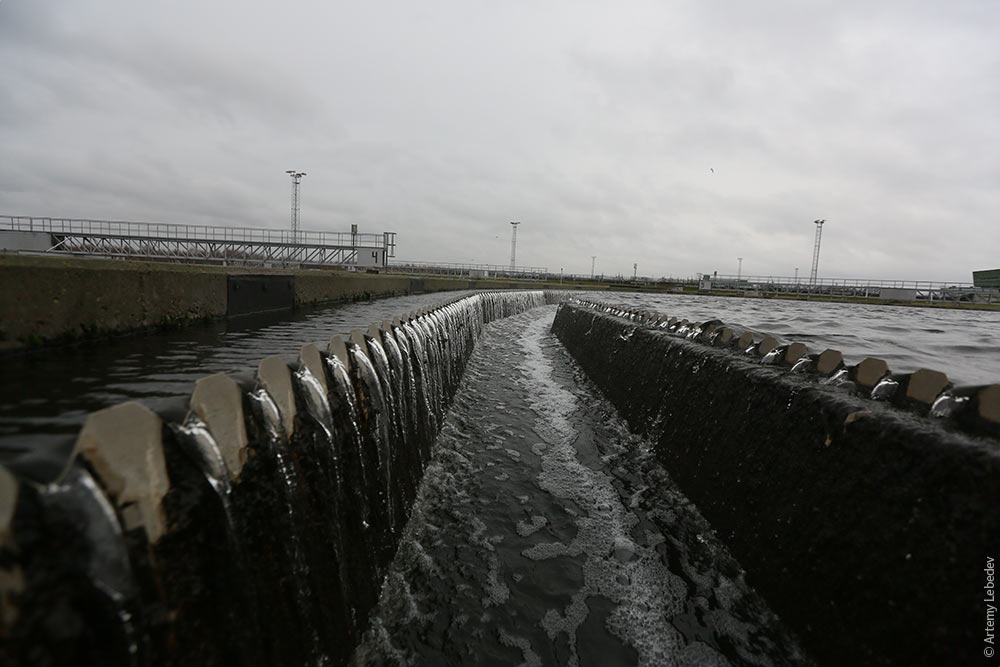 The big circles are primary sedimentation reservoirs. Every reservoir has a sludge scraper, which rotates constantly to scrape off excess sludge (the overabundant food makes it proliferate). 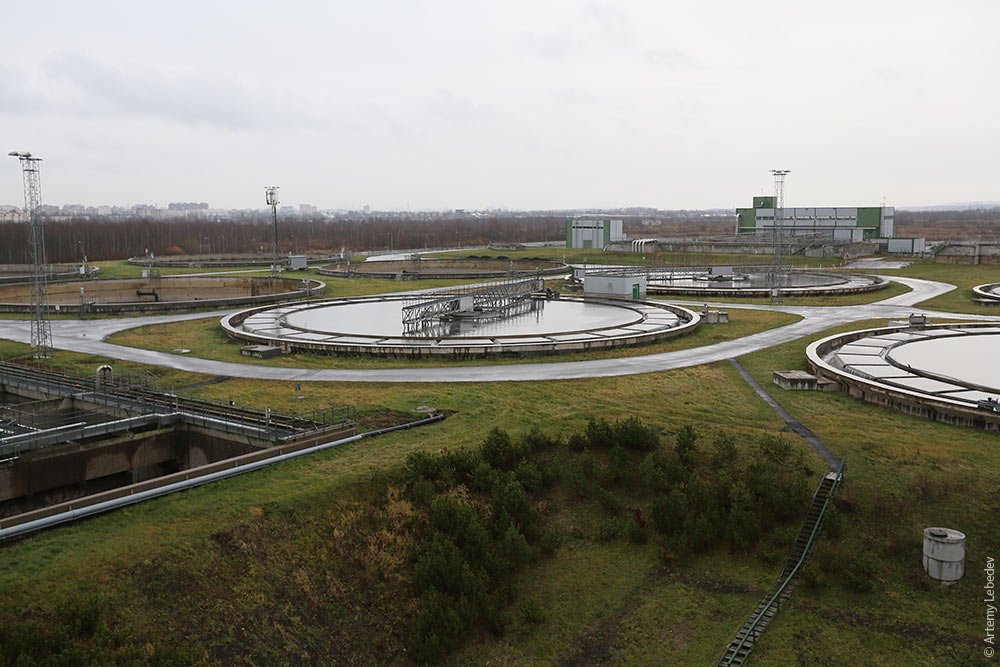 After that the water, already relatively clean, enters the secondary sedimentation tank. 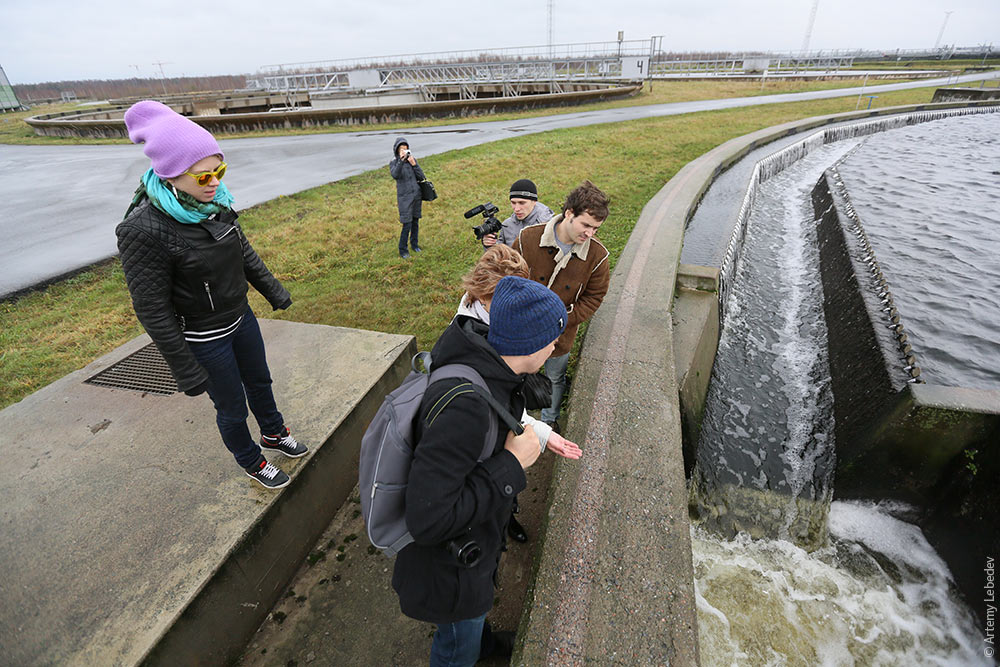 Then it goes through all sorts of additional filtration, ultraviolet irradiation, and so on. 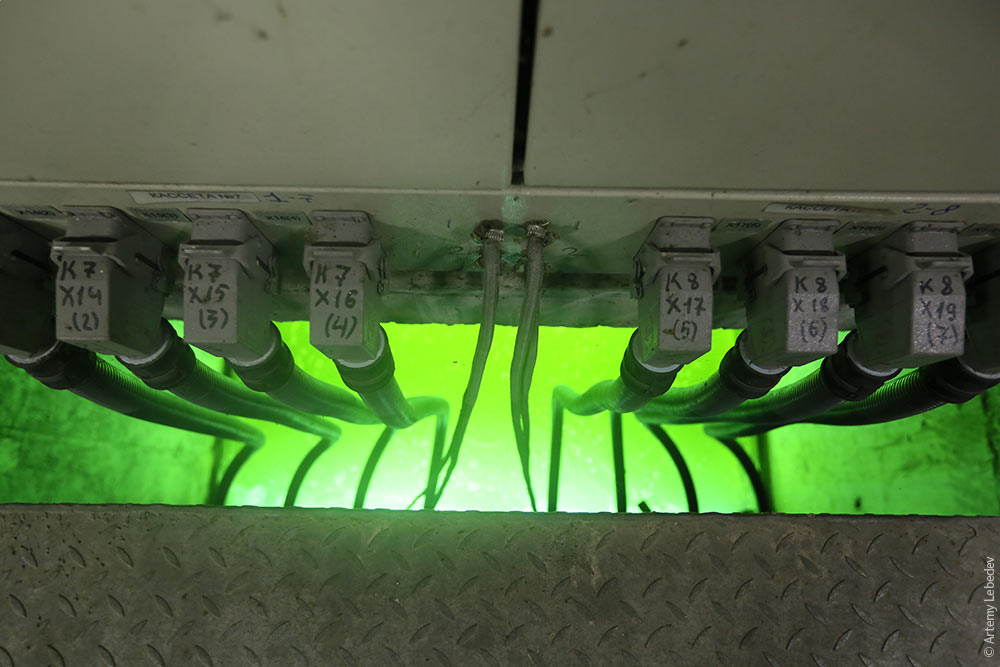 The quality of the treated water is evaluated using crayfish with heart rate monitors attached to their backs. There are six crayfish per shift. If the water is shitty, the crayfish get upset, red lights go on, chemists rush over to analyze the issue, and water discharge is temporarily suspended. 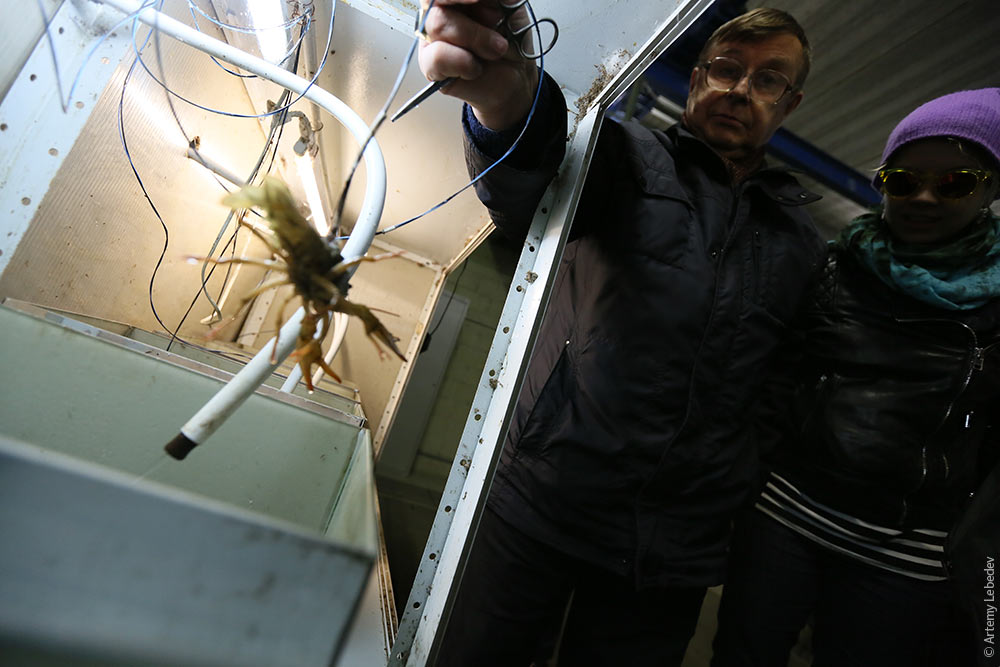 The treated water is dumped into the Gulf of Finland. And the dry solid residue is burned in furnaces. We had lunch at the Vodokanal cafeteria. 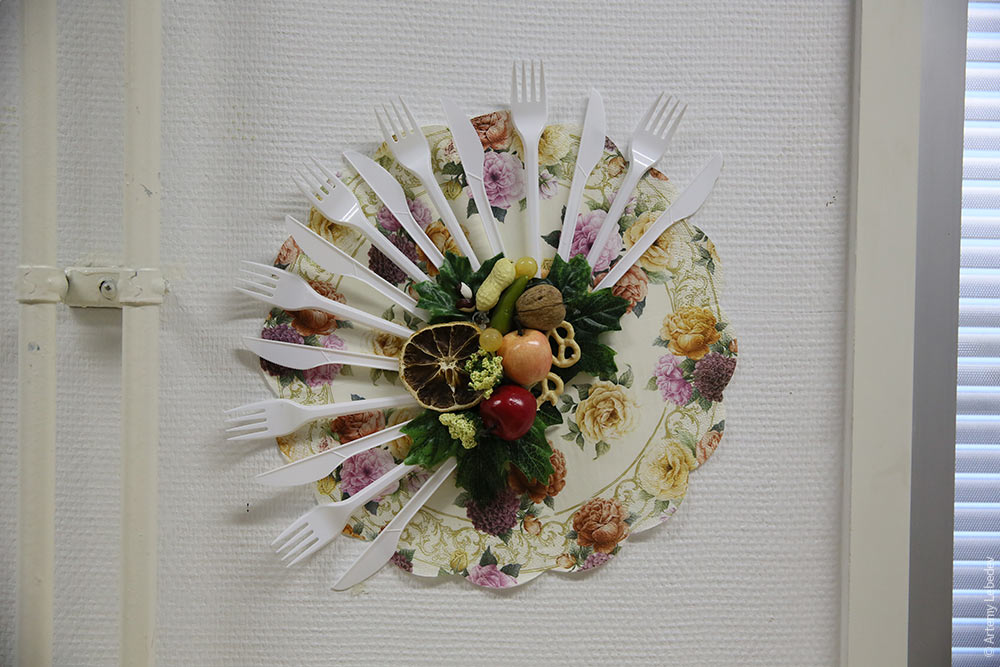 The main intrigue of the whole wastewater treatment project is that the construction of the facilities was funded by other countries. Finland got tired of Saint Petersburg with its five million inhabitants flat-out dumping all its shit into the Neva River, from where it makes its way into the Gulf of Finland and then further into Europe. So the Finns said, hey dudes, why don’t you start filtering your shit already? And Piter was all like, we have no money. And continued shitting into the river. The Finns put up with it for a long time, then finally cracked and asked the EU for money, which they gave to Saint Petersburg. This happened literally only a couple of years ago. The story of how Europeans cleaned up Saint Petersburg’s shit on their own dime isn’t part of the guided tour; this is extra-curricular knowledge. But no one had the gall to take down the photo of the President of Finland at the station’s inauguration. 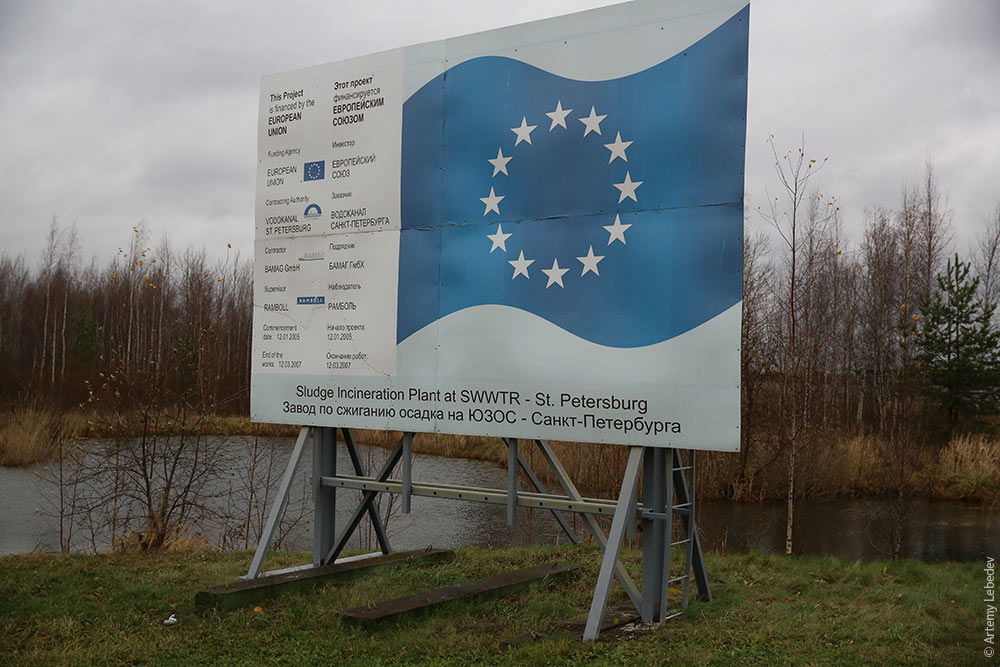 For dessert, we took a look at the Runoff Control Center. From the outside, it looks like a nondescript building by the Grenadiers Bridge. But there’s a 90-meter pit underneath it. Many people think it’s just a small office center. 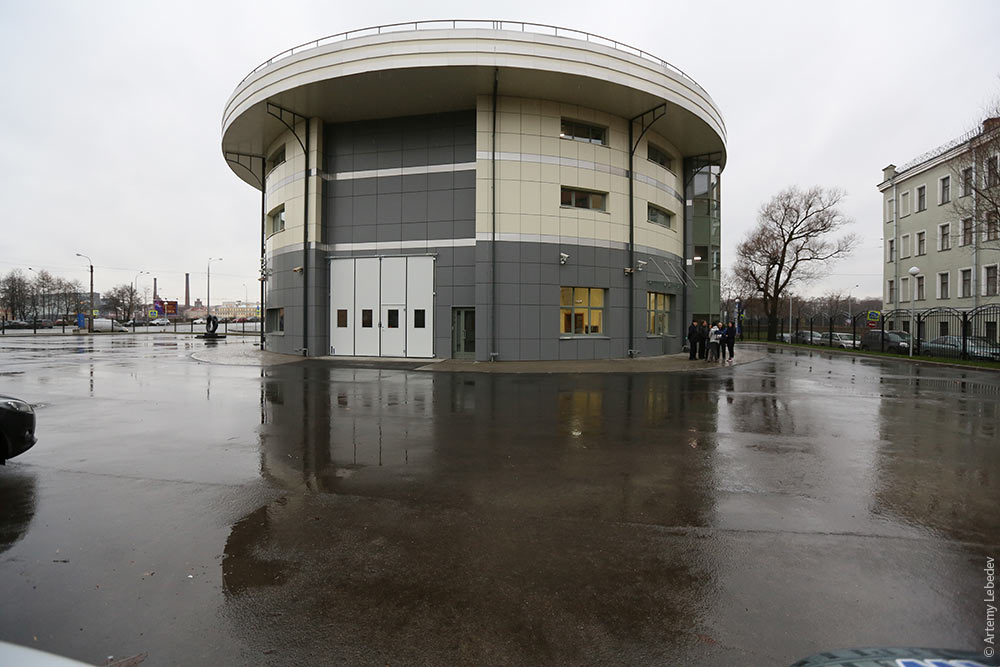 The shit sewer is at the very bottom, and there’s a second one at a depth of 30 meters. If the flow at the very bottom is too intense, pumps will raise part of the flow from 90 meters to 30. This is what runoff control is all about.  Don’t forget to flush your toilet and use your toilet brush. All those expensive facilities weren’t built for nothing! |